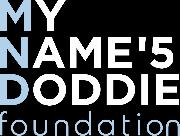Guiding principles for drug discovery and development in amyotrophic lateral sclerosis
Published 6th December 2023
Developed through a strategic partnership between:



Endorsed by:

Abstract
The level of research activity undertaken globally into the causes of amyotrophic lateral sclerosis has dramatically expanded in recent years, resulting in the identification of multiple genetic risk factors, cellular pathways, and potential drug targets. Despite these advances, ALS remains an inexorably progressive and fatal disease with limited therapeutic options. This expert led review is the product of a series of focussed workshops with participants from basic and translational ALS research groups, industry professionals and research funding agencies. The outputs of these workshops were then introduced to international ALS stakeholders to comment via a Delphi survey and through an additional online workshop engaging over 60 experts globally, to further refine and shape the guidance. We discuss the factors governing the barriers to translation of advances in basic science into an effective therapy for ALS, and suggest guiding principles for de-risking clinical trials of novel therapeutics by an enhanced evidenced-based approach to preclinical studies.
Authorship
This white paper was developed by an expert working group which met throughout 2022. The group was convened by the MND Association and My Name’5 Doddie Foundation and coordinated by Medicines Discovery Catapult.
Talbot Ka*, Al-Chalabi Ab, Ajram Lc, Bendotti Cd, Bonetto Ve, Bose Sf, Bruijn LIg, Cole Nh, Coney Li, Dickie
BGh, Greensmith Lj, Latimer Jk, Malaspina Aj, McGrath Sl, Mead RJm, Nyberg Sh, Phelan An, Richardson
JCo, Turner MRa, Van Den Bosch Lp , Waters J, Wright PDq, and Lee JLc .
a Nuffield Department of Clinical Neurosciences University of Oxford, Oxford, UK.
b Maurice Wohl Clinical Neuroscience Institute, Kings College London, London, UK.
c Medicines Discovery Catapult, Alderley Park, UK.
d Laboratory of Molecular Neurobiology, Department of Neuroscience, Istituto di Ricerche Farmacologiche Mario Negri IRCCS, Milano, Italy.
e Laboratory of Translational Biomarkers, Department of Biochemistry and Molecular Pharmacology, Istituto di Ricerche Farmacologiche Mario Negri IRCCS, Milano, Italy.
f Department of Neuroscience, Eli Lilly & Company Limited, 8 Arlington Square West, Bracknell RG12 1PU.
g NIBR, Novartis, Basel, Switzerland.
h Motor Neurone Disease Association, Northampton, UK.
i Cell and Gene Therapy Catapult, London, UK.
j UCL Queen Square Motor Neuron Disease Centre, UCL Institute of Neurology, London, UK.
k Medical Research Council, Swindon, UK.
l My Name’5 Doddie Foundation, Edinburgh, UK.
m Sheffield Institute for Translational Neuroscience, University of Sheffield, Sheffield, UK.
n Benevolent AI, London, UK.
o Neuroscience, MSD Research Laboratories, 120 Moorgate, London, EC2M 6UR, United Kingdom
p KU Leuven, Department of Neurosciences, Experimental Neurology and Leuven Research Institute for Neuroscience and Disease (LIND), Leuven, Belgium; VIB, Center for Brain and Disease Research, Laboratory of Neurobiology, Leuven, Belgium.
q LifeArc, Stevenage, UK.
* Corresponding author: kevin.talbot@ndcn.ox.ac.uk
Introduction
Amyotrophic lateral sclerosis (ALS) is a neurodegenerative disease characterized by progressive paralysis, ultimately resulting in respiratory failure and death, on average 2-3 years from first reported loss of function, but with wide variation ALS has a median onset of 65 years and a lifetime risk of 1/350, in European populations (1)(2) A reliable diagnosis can be made using clinical criteria and supportive neurophysiological tests once the disease is well established, though early diagnosis remains a challenge (3) Our understanding of the complex biology of ALS, which is characterized by considerable clinical, genetic and pathological heterogeneity is still incomplete, (4)(5) Little is known about the biological basis for the variation in clinical features such as rate of disease progression.
Factors leading to high failure rates in ALS clinical trials include the inadequacy of preclinical models in predicting efficacy in humans, significant delay in diagnosis, and uncertainty about which pathways define the most treatable phase of the disease. Only one drug, riluzole, has been approved for ALS treatment by multiple regulatory agencies internationally
Building on existing recommendations for preclinical studies in rodents, and for the design and implementation of ALS clinical trials (6)(7) , a cross-sector group of ALS experts in academia and industry have combined to i) agree a consensus on the key reasons for poor translational outcomes in ALS, and ii) generate recommendations for the optimization and conduct of preclinical studies to improve confidence that a drug will show efficacy in human trials. It is recognized that every therapeutic programme will be different and may employ some but not all of these principles. This guidance does not intend to stifle innovation, but to catalyse high quality preclinical drug discovery efforts and create a shared vision for all stakeholders involved in ALS drug discovery research.
Factors responsible for poor translation in ALS drug discovery and development
The persistent high failure rate in ALS clinical studies, despite decades of ALS drug discovery efforts, is due to a combination of factors outlined below.
Complex Aetiology and Pathogenesis
• Incompletely understood, including relative importance of early versus late events
Preclinical models do not predict efficacy in human trials
• Lack of implementation of existing guidance (7)(8)
• Historical reliance on SOD1 animal models (non-TDP-43 pathology)
• Models mimic limited aspect of ALS pathology and lack a human biological context (e.g. TDP-43 regulation of cryptic exon splicing)
• Emphasis on survival as an endpoint, particularly in SOD1 mice (7)
• No credible models for ‘sporadic’ disease
• No reliable large animal models (relevant for CSF biomarkers, PK and other parameters)
• Lack of independent verification between laboratories or through CROs, and across different models
• Failure to demonstrate target engagement
• Lack of biomarkers correlating with efficacy in preclinical models
• Failure to align animal-model findings with human data (genetics, tissue, fluid samples)
• Lack of effective PK/PD to inform human dosing
Experimental Medicine is underdeveloped
• Weak rationale derived from other neurodegenerative diseases (i.e., for small molecule repurposing)
• Lack of data for blood-brain barrier penetration, target engagement, biomarker response, dose finding
• No framework for stratification according to biological readouts (genotype, pathway specific biomarkers)
Clinical studies are onerous, time-consuming, and expensive
• Lack of robust measures of disease progression, limitations of ALSFRS-R as primary endpoint
• Need for better clinical and patient-reported outcome measures, and statistical powering
• Lack of stratification/enrichment strategy by drug mechanism
• Trials historically performed late in disease due to delayed diagnosis
• Short study length may not predict long-term benefit
• Prohibitive cost with current trial designs, need for digital endpoints and PPIE in trial design
Therapeutic case studies
To better understand how to develop best practice in ALS drug discovery and development, we have considered several key therapeutics that have succeeded or failed in clinical trials as case studies.
Case study: riluzole
Rationale:
Chronic glutamate excitotoxicity may contribute to neuronal death in ALS (10). Although riluzole has multiple pharmacological effects, one plausible mechanism of action is blockade of the presynaptic release of glutamate
Preclinical studies:
No preclinical studies were conducted prior to the first riluzole clinical study in ALS
Clinical studies:
• The first randomized controlled trial demonstrated a modest increase in survival at one year with riluzole compared to placebo (11)
• A much larger dose‐ranging study confirmed a small but statistically significant increase in survival with intermediate and high dose riluzole (12)
• A Cochrane review of 4 riluzole clinical studies concluded that riluzole prolongs median survival by about two to three months in people with ALS (13) .
Implications for future studies:
Riluzole has multiple pharmacological effects. A lack of understanding of the exact mechanism of action in ALS means there is no biomarker and patient stratification strategy. Systematic prospective or retrospective studies using blood and CSF neurofilaments as potential treatment response markers are not available. No quality-oflife data is available for riluzole.
Case study: edaravone
Rationale:
Edaravone, a free radical scavenger, is licensed for the treatment of acute ischaemic stroke in Japan. Excess free radical generation has been linked to neuronal damage in ALS.
Preclinical studies:
Efficacy: SOD1 G93A mice, intraperitoneally administered edaravone upon identification of clinical onset (14)
Efficacy: SOD1 H46R rat model (15)
Efficacy: Wobbler mouse, intraperitoneally administered with edaravone upon identification of clinical onset (16) .
Clinical studies:
• Modest effect on behavioural function and motor neuron sparing in these models
• No effect on survival was observed
• No significant change in behavioural function or survival
• Higher dose (10 mg/kg) of edaravone treatment significantly attenuated muscle weakness and contracture in the forelimbs, and suppressed denervation atrophy in the biceps muscle and degeneration in the cervical motor neurons compared to vehicle.
• The study was limited to a short duration of only 4 weeks.
• A phase 3 study showed no significant delay in disease progression as measured by ALSFRS-R upon treatment with edaravone. However, one of the secondary endpoints, pinch strength, was significantly better with treatment (17). A post-hoc analysis did identify efficacy in a small subset of people with ALS, evidenced by a smaller decline in ALSFRS-R score compared to placebo (18)
• A subsequent phase 3 study attempted to investigate the safety and efficacy of edaravone in this more defined subset of patients and did demonstrate less functional loss at 6 months and reduced quality of life deterioration compared to those receiving standard of care (19)
• A recently published study aimed to evaluate the long-term safety and effectiveness of intravenous edaravone therapy for patients with ALS in a real-world clinical setting. Disease progression among 116 patients treated for a median of 13.9 months with edaravone did not differ from 116 patients treated for a median of 11.2 months with standard therapy. The study concluded that although longterm intravenous edaravone therapy for patients with ALS was feasible and mainly well tolerated, it was not associated with any disease-modifying benefit (20)
Implications for future studies:
Preclinical studies in relevant ALS models (in vivo and/or patient-derived cells) are recommended before progression to clinical study, to demonstrate mechanism of action, efficacy, predict dose for human studies and identify a relevant biomarker stratification strategy.
Case study: tecfidera (dimethyl fumarate)
Rationale:
Tecfidera is licensed for the treatment of multiple sclerosis, where it was shown to alter the immune response toward a more anti-inflammatory profile by increasing the number of regulatory T-cells.
Alterations in regulatory T lymphocytes correlate with disease progression rate and severity in ALS (21) , supporting the hypothesis that Tecfidera would reduce inflammation and potentially slow disease progression in people living with ALS.
Preclinical studies:
No ALS preclinical studies have been published, to our knowledge.
Clinical studies:
In a phase 2 study, treatment with Tecfidera failed to show a significant difference in ALSFRS-R score at week 36 and there were no significant changes in other secondary outcome measures (survival, neurophysiological index, respiratory function, urinary neurotrophin-receptor p75 and quality of life) (22)
Implications for future studies:
• Preclinical studies in relevant ALS models (in vivo and/or patient-derived cells) are recommended before progression to clinical study, to demonstrate mechanism of action, efficacy, predict dose for human studies and identify relevant biomarker or patient stratification strategy.
• Proof of mechanism studies in ALS patients could also be valuable to demonstrate back translation from patients to preclinical models.
Case study: tofersen (SOD1 antisense oligonucleotide)
Rationale:
Gain of function genetic variants in SOD1 are associated with 20% of familial ALS cases. Antisense oligonucleotides provide a method to directly target gene expression
Preclinical studies:
Target engagement: by ASO administration in SOD1 G93A mice and rats (23) .
Efficacy: SOD1 G93A mice and rats, by injection of Tofersen at 50 and 94 days, then 80 and 110 days (23)
Markers of disease: were studied after dosing SOD1 G93A at 5 weeks of age (23)
Reversal of SOD1-mediated neuronal dysfunction: Mice were treated at 9 weeks of age when CMAP had clearly begun to decline and pNFH had begun to rise (23)
Proof-of-principle in non-human primates (cynomolgus monkeys) (23) .
Clinical studies:
• CNS penetration determined
• Reduction of SOD1 expression achieved
• Tofersen treated mice maintained weight, performed better on the rotarod assay and had extended survival
• Compound muscle action potential (CMAP) and innervation of the tibialis anterior muscles in the hind limbs was maintained in treated mice
• Treated mice showed lower levels of serum phosphoneurofilament heavy chain (pNFH) levels
• Substantial increase of CAMP and decrease in pNFH was seen in treated mice
• Demonstrated successful reduction in SOD1 expression and determined PK/PD relationship
• Phase 1-2 studies demonstrated CSF SOD1 concentrations decreased at the highest concentration of Tofersen administered intrathecally over a period of 12 weeks (24)
• Phase 3 failure: after 28 weeks of therapy, patients did not demonstrate statistically significant improvements in the primary endpoint assessed by the Revised Amyotrophic Lateral Sclerosis Functional Rating Scale (ALSFRS-R) compared to placebo. However, preliminary data suggests that Tofersen reduced NF-L levels and showed signs of slowing disease progression, particularly in patients who started treatment early (25)(26) .
Implications for future studies:
• Recruitment of SOD1 A4V patients into studies that were late on in disease progression was inconsistent with the state of disease progression tested in preclinical studies and may have masked a treatment effect
• Possibility for more sophisticated preclinical studies with a marker of efficacy e.g., demonstrate pathway modulation, motor unit survival.
• Opportunity for Experimental Medicine studies to identify a patient stratification strategy and identify most appropriate endpoints for clinical studies.
• Longer follow up than 6 months may be required to show clinical effect
Case study: ozanezumab
Rationale:
Neurite outgrowth inhibitor A (Nogo-A), a high molecular-weight transmembrane protein, initially identified as a potent myelin-associated inhibitor of axonal growth, is upregulated in ALS and might promote denervation. Ozanezumab is a specific antibody directed against Nogo-A.
Preclinical studies:
Target engagement: in SOD1 G93A mice (27)
Efficacy: Symptomatic treatment of SOD1 G93A mice from 70 days of age with Ozanezumab (27)
• Co-localisation of ozanezumab with Nogo-A between muscle fibres and tissue via immunohistochemistry, and increased Nogo-A RNA levels
• Compared with vehicle-treated SOD1G93A mice, early symptomatic treatment with anti-Nogo-A antibody from 70 days of age significantly improves muscle innervation, muscle function and phenotype and increases motor neuron survival in symptomatic mice SOD1G93A mice at 90 days of age
• However, the improvement in muscle function and motor neuron survival was not maintained and by 120 days most of the beneficial functional effects of anti-Nogo-A treatment was no longer observed in SOD1G93A mice
Clinical studies:
• Ozanezumab was well tolerated in a first-in-human trial (28) .
• In a Phase 2 trial, Ozanezumab did not show efficacy compared with placebo in patients with ALS. The primary outcome was a joint-rank analysis of function (ALSFRS-R) and overall survival, analysed at 48 weeks in all patients who received at least one dose of study drug (29)
Implications for future studies:
• Preclinical studies indicated that treating early with ozanezumab during disease progression may represent a valid therapeutic window to delay disease progression, yet patients were not stratified by stage of disease progression in clinical studies
• Future studies should incorporate patient stratification approaches, including stage of disease, where appropriate.
Case study: sodium phenylbutyrate-taurursodiol
Rationale:
Coformulation of the compounds sodium phenylbutyrate and taurursodiol (also known as tauroursodeoxycholic acid) are proposed to reduce neuronal death in ALS by simultaneously mitigating endoplasmic reticulum stress and mitochondrial dysfunction.
Preclinical studies:
Preclinical data support a mitigating effect of sodium phenylbutyrate (PBA) or taurursodiol alone on neuronal death and other disease‐specific features in models of neurodegenerative diseases and mitochondrial dysfunction. However, no published preclinical studies of Taurursodiol undertaken specifically in relation to ALS could be found, nor could preclinical evidence of Sodium Phenylbutyrate-Taurursodiol treatment in ALS models.
Efficacy of PBA: In G93A SOD1 mice treated 21 before symptoms occur (30) and in combination with riluzole (del Signore et al., 2009).
Functional assays PBA: in G93A SOD1 mice treated 21 before symptoms occur (30) and in combination with riluzole (31)
• Compared to vehicle-treated SOD1 G39A mice, treatment with PBA resulted in extended survival, improved motor performance as demonstrated by the rotarod assay, improved stride length and body weight and reduced hindlimb muscle wasting
• In combination with riluzole, PBA showed synergistic effect in improving body weight loss, grip strength deficit and life span.
• PBA demonstrated a neuroprotective effect, as demonstrated by reduced atrophy of the lumbar spinal cord and ventral neuron loss compared to untreated mice
• PBA also prevented ubiquitinated-positive aggregates in spinal cord ventral horn neurons
• Molecular mechanism of PBA determined and PBA shown to restore dysregulated signalling in ALS mice.
• In combination with riluzole, PBA attenuated lumbar ventral horn neuronal loss and reactive astrogliosis by increasing Histone 4 acetylation and NF-kBp50 translocation to the nucleus in G93A mice.
Clinical studies:
• Pilot clinical studies confirmed PBA and tauroursodeoxycholic were well tolerated in individuals with ALS (32,33)
• In a phase 2 trial, Sodium Phenylbutyrate-Taurursodiol resulted in slower functional decline than placebo as measured by the ALSFRS-R score over a period of 24 weeks. No secondary endpoints were significantly different including the rate of decline in plasma levels of the phosphorylated axonal neurofilament H subunit (pNF-H) and time to death (34) .
• In an open-label extension of its phase 2 trial, 35-weeks post randomisation, treatment with Sodium Phenylbutyrate-Taurursodiol demonstrated a 6.5 month longer median survival as compared with matching placebo comparator (35). Implications for future studies:
• Independent replication of preclinical findings from other diseases should be carried out in ALS models
• Studies should consider extending study duration beyond six-months to identify long-term effects on survival.
Guiding principles for ALS drug discovery and development
Taking into account failures of pivotal ALS clinical studies and best practice in the field, we propose a framework of guiding principles for ALS drug discovery and development programmes, with the aim of increasing confidence in a new target, drug and clinical study design to enable the best chance of success in clinical trials. Given that we do not yet have a definitive set of principles for successful ALS drug discovery and development, we suggest that a pragmatic view must be taken on a case-by-case basis to ensure that frameworks such as this do not slow progress
A key element required to enable the implementation of these guiding principles, is the provision of appropriate funding. Some of the studies outlined are costly but do not fit within traditional grant funding schemes e.g., funding for independent validation of preclinical efficacy or Experimental Medicine studies. Integration of resources and reducing barriers to accessing appropriate infrastructure are also fundamental requirements to enable innovators to implement the principles outlined below.

Disease biology and linkage
Definition of the drug target, and its relation to ALS pathophysiology

Target validation


Expression of target in relevant tissue and linkage to ALS in humans confirmed

Develop platform of evidence for target relevance, differentiation, and target safety

Preclinical studies
Target engagement and downstream pharmacodynamic biomarkers defined

PD studies - Drug shown to modulate functionally relevant pathway in vitro and/or in vivo (e.g., iPSC models, mouse model where target pathway is dysregulated and/or in vivo model of ALS).

Experimental Medicine

Build body of evidence by repeating a hypothesis using multiple relevant models or approaches

Target tissue exposure and target engagement demonstrated

Understanding of effect of drug on downstream pathways and disease biology

Stage of disease for most effective target modulation hypothesised e.g. symptomatic vs presymptomatic
Target modulation shown to result in pathway modification and rescue of disease phenotype in vitro e.g., iPSC or other relevant cellular model


Target tissue exposure and target engagement demonstrated in vivo (e.g., wildtype mouse)

Evidence of functional response

PK studies in wild-type mice; determine appropriate dosing regimen and route of administration

Robust biomarker and patient stratification strategy established
Use of preclinical models of ALS in drug discovery and development
In contrast to the successful use of preclinical models in developing antisense oligonucleotide therapy (in ALS and SMA), there is currently no example of a preclinical model which has successfully predicted efficacy of a drug in clinical trials in sporadic ALS. Until this has been achieved, proposing one or more ‘ideal’ preclinical models remains aspirational. However, a number of promising preclinical models for ALS exist and, if used appropriately, have the potential to improve translation of preclinical approaches and to predict clinical response in ALS. Models should always be selected with respect to the specific biological question being asked. For example, the antisense oligonucleotide against SOD1, tofersen, was assessed preclinically in the SOD1 mutant mouse model, to reflect the relevant human target population for therapy i.e., people with ALS carrying a SOD1 mutation.
In selecting the right model to test a therapeutic hypothesis, diverse approaches are available, including:
• In vitro cell lines e.g. NSC-34 or SH-SY5Y cells, used in screening assays or to establish initial evidence for relevance of a cellular target pathway
• Induced pluripotent stem cells (iPSC) models, which are being increasingly used as tools to explore target engagement and treatment response in vitro
• Ex vivo autopsy or biopsy samples from people with ALS are critical tools for drug discovery and development, e.g. for the identification of biomarkers and assessment of target expression
• In vivo models including the expression of wild-type human genes, genetically engineered ALS mutations, and models designed to generate specific phenotypes, e.g. conditional (tissue specific) expression to generate neurodegeneration mouse models
Below, we provide some recommendations for how iPSC and in vivo models can be used for ALS drug discovery and development.
iPSC models
The role of iPSC models for modelling neurodegenerative diseases has been recently reviewed in detail (36). In ALS drug discovery and development, iPSC-based models may have increasing utility in high throughput and innovative screening approaches (37), and have the potential to facilitate the study of sporadic cases of ALS, which is not currently possible using in vivo models (38). For preclinical drug discovery, iPSCs can aid in validation of target engagement, downstream pathway analysis and assessment of the effect of drugs on cellular phenotypes and other readouts which reflect disease pathology. Reprogramming of parent cells to iPSCs may erase the epigenetic signature associated with ageing, potentially reducing the capacity to identify relevant phenotypic ALS markers (39). In contrast, direct reprogramming retains ageing-associated signatures (40), and may therefore provide a more realistic tool for validation in specific instances, such as astrocyte toxicity to neurons (41) Largescale initiatives to create an accessible bank of iPSC lines from ALS patients are underway, including ‘Answer ALS’ which is creating up to 1,000 unique stem cell (iPSC) lines from ALS patients and healthy controls (42)
Rigorous and continuous quality control of iPSCs is essential, given the potential for reprogramming to introduce genomic instability (43,44) and for culture-driven mutations to propagate though clonal selection Background
genetic variation, distinct from the disease determining variant, and most of which is not disease relevant, combined with differences in experimental protocols between laboratories, explains why the transcriptomic readouts produced to date show disappointingly little overlap between lines. Isogenic cell lines as experimental controls, and generation of mutant lines on a common parental cell line are approaches being used to limit the confounding effects of genetic background. The iPSC Neurodegenerative Disease Initiative (iNDI) is the largestever iPSC genome engineering project, and will model more than 100 mutations associated with Alzheimer's disease and related dementias (ADRD) in isogenic iPSC lines, several of which will be relevant for ALS. Resulting cell lines and phenotypic datasets will be widely shared (45) .
Recommendations for validation of iPSCs in ALS disease modelling
1. Standardised quality control (46)
• Microbiological sterility - mycoplasma, endotoxins, bacteriology, viral testing
• Genetic fidelity and stability – residual vector testing, karyotype, SNP arrays (used in combination).
• Viability – e.g. doubling time
• Identity – SNP profiling cells to create cell line “fingerprints” to regularly confirm cell line identity.
2. Comprehensive cell line characterisation
• Initial demonstration that cells retain differentiation potential i.e. ability to form of all three germ layers
• Characterise cell types against agreed criteria via molecular profiling e.g. neural progenitor cells positive for Pax6+, Sox1+, Nestin+; Hb9+ and Isl1/2+ motor neurons; astrocytes; microglia; muscle (41)
• Characterisation of cell types via phenotypic hallmarks:
- Astrocytes: Toxicity to neurons; impaired glutamate uptake (Yamanaka & Komine, 2018).
- Neurons: Ubiquitination and axonal swelling; Glutamate excitotoxicity; Increased oxidative stress; proteinopathy relevant to the cell model genetic background (TDP-43, SOD1, FUS, C9Orf72 etc.)
- Microglia: Release of inflammatory mediators (36)
- Muscle: Fewer muscle unit contractions, increased apoptosis (50)
• Consider use of transcriptomics as a tool to gain more insight into cell identity and biology.
3. Interrogation with positive controls
• Does applying a drug result in the expected change to the phenotype?
• Can the phenotype be modulated either pharmacologically or genetically?
In vivo ALS models
A variety of accessible and well characterized animal models exist for ALS, each of which may have complementary roles in the study of disease mechanisms (51). However, given that ALS is a disease of mid to late life which may be specific to humans, it is not realistic to expect an in vivo model to perfectly recapitulate all features required to function as a precise tool for Go/No-Go decisions about therapy. Individual models should be tailored to address specific questions, and are only one part of a complex decision matrix to take a drug into humans.
In the earlier stages of drug discovery e.g. drug screening, more tractable in vivo models that enable high throughput studies include Caenorhabditis elegans, Drosophila melanogaster and Danio rerio (zebrafish). In vivo mouse models are key for validation studies in the later stages of preclinical drug discovery and development, for example, for target engagement and PK/PD studies. Mice with disease-relevant phenotypes or pathways can be used to test the effect of drugs on specific aspects of the disease, and to test target engagement. Genetically modified mice expressing ALS related SOD1 mutations, for example, have been critical for the development of
targeted genetic therapies (tofersen) Guidance exists for the use of SOD1 mice in preclinical drug testing (7,8) Although, an appropriate model in which to study SOD1 dysregulation, the relevance for most cases of ALS, which is pathologically a TDP-43 proteinopathy, is unclear Phenotypes in these mice are driven by major overexpression of mutant SOD1 protein, and outcomes based on survival may not translate into human ALS. Moreover, there are no credible mouse models of ‘sporadic’ ALS, which represents around 90% of all ALS patients, highlighting a key gap in existing models.
Going forward it is critical that investigators use models and assays that are tailored to ask specific questions related to the relevant targets and biology of their preclinical development programme
Examples of relevant use of animal models in ALS drug discovery and development
Stage in drug discovery/ development
Pathway screening and analysis
Drug screening
Relevant models examples Relevant assay examples
Caenorhabditis elegans
Drosophila melanogaster
Danio rerio
C. elegans – motility assays
D. melanogaster – Motor assays, survival D. rerio – axonal outgrowth, touch evoked escape response, swim assays
Limitations
• C. elegans and D. melanogaster - evolutionary distant to humans
• D. rerio – genome duplicated; difficult to manipulate; assays more suited to neuronal development rather than degeneration
• PK/PD and blood-brain barrier permeability require confirmation in other models e.g., rodents
• Metabolism different to humans
Demonstration of target engagement in vivo
Demonstration of drug efficacy in vivo
Wild-type mouse OR
ALS mouse model OR Mouse model displaying dysregulation of target pathway
e.g., non-ALS mouse model of neurodegeneration
ALS mouse model OR Mouse model displaying dysregulation of target pathway
Biodistribution assays (e.g., PET)
Tissue and pathway analysis (e.g., spatial transcriptomics, -omics, mass spec)
Behavioral assays:
Grip strength; motor performance, rotarod; electrophysiology; clinical investigation e.g., overall mobility, weight; behavioral analysis; survival; in vivo axonal transport assays
Interventional endpoints: Measurement of translational biomarkers; muscle force – isolated muscle preparations; motor unit survival (e.g. neuromuscular junction integrity); axon count
• Electrophysiology is difficult to perform and signal is typically very low during early disease stages
• Behavioral studies are expensive
• Clinical investigation in mice is subjective and open to interpretation
• Interventional endpoints are limited in number of time points as animals are typically deceased upon measurement
• Variation in technical expertise between laboratories
Guiding principles for ALS therapeutic preclinical data packages
To support the development of high-quality preclinical data packages and ensure critical evaluation occurs before assets progress to clinical studies, we recommend the principles below are systematically considered A robust body of evidence to support and inform well planned Experimental Medicine studies is central to building greater confidence of achieving a positive translational outcome of the right target for the most appropriate patient group and stage of disease progression.
Delineate the biological pathway/mechanism being targeted, and whether its modulation protects cells or restores function
• Studies in relevant in vitro and/or in vivo models, including molecular techniques such as knock-down and overexpression studies.
Assess evidence that targets are linked to disease and expressed in the relevant tissue in humans
• Bioinformatic approaches e.g. whole genome sequencing, genome-wide association studies
• Target expression studies in relevant human neuropathological tissue e.g. immunohistochemistry, spatial transcriptomics, in situ hybridisation
Identify whether the target is druggable and whether its modulation alters disease progression
• Assess whether the drug penetrated the target tissue (e.g. CNS, muscle) and achieved sufficient engagement of the target to effect a change
• Identify appropriate biomarkers of target engagement and explore downstream pathway analysis through iPSC and in vivo models
• Replication of results in an independent lab or across several relevant models can build confidence in the therapeutic hypothesis
Identify appropriate biomarkers (new and existing) to measure disease modification
• Plasma NF-L to evaluate disease progression rate (52).
• Explore further functional outcomes, -omics and imaging approaches aligned to mechanism of action
Predict accurate human dose
• Through high quality PK/PD studies, identify drug biodistribution and half life, assess potential for any off target effects that may lead to adverse reactions, and agree an approach for route of administration and dosing in Experimental Medicine and Clinical Studies
Identify possible approaches for patient stratification, and predict appropriate trial duration.
• Can a subpopulation of patients more likely to respond to the therapy be identified. Examples of stratification approaches include: clinical phenotype, genetics, NF-L levels and the ALSFRS progression rate
• Based on treatment response in vivo, can the length of Experimental Medicine and clinical studies required to detect response to treatment be predicted? E.g., to detect changes in NFL levels or impact on ALSFRS
Replication of preclinical findings in multiple models or through multiple approaches
Due to the desperate nature of the disease and the pressure to find effective treatments, ALS therapeutic hypotheses have not always been rigorously validated or replicated before compounds have progressed to human trials, resulting in wasteful allocation of precious resources. Relatively short delays may be incurred at the preclinical stage to invest in building a stronger body of evidence, but the ability to “fail fast” and stop programmes early will speed progress in the long-term.
Embedding a culture where preclinical findings are routinely replicated in multiple models will challenge existing research cultural, funding and infrastructure. Therefore, development of an independent centre or collaborative network that has the appropriate expertise, capability and models to run rigorous preclinical studies could be a valuable resource to the global ALS field.
Phenotypic
drug discovery
A counterpoint t to therapy developed against known targets are drugs identified through phenotypic drug screening, an approach with advantages and disadvantages:
Advantages of phenotypic drug screening
Opportunities for drug repurposing e.g. through use of existing compound libraries
Potential for the identification of novel targets
Utilizes precise readouts reflecting specific aspects of ALS pathology e.g. TDP-43 mislocalisation (53) , modulation of neuronal excitability (54) .
Challenges of phenotypic drug screening
Labour intensive.
Difficult to perform at scale, with large compound libraries.
Target deconvolution is difficult
Molecular biomarkers in ALS
Biomarkers for diagnosis, prognosis, PD and monitoring are crucial tools in drug discovery and development, through enabling patient stratification, supporting critical go/no-go decisions, and providing read outs of target engagement and efficacy. In ALS, there has been a lack of well validated biomarkers, which is therefore a major gap in the field which inhibits the development of innovative models for rapidly assessing investigational therapies in patients.
Neurofilaments are key components of the neuronal cytoskeleton. Levels of NFL or phosphorylated neurofilament heavy chain in the cerebrospinal fluid (CSF) rise in response to a range of neurological disorders associated with neuronal loss, broadly in proportion to the rate of disease progression (55). Advances in assay sensitivity now permit the reliable measurement of NFL levels in blood, which correlate well with CSF (56). Studies in ALS have consistently shown NFL levels to be raised in comparison with healthy and disease control groups (56–58)
A role for NFL measurement in the diagnosis of ALS in a specialist setting remains uncertain since it does not increase the diagnostic accuracy of an experienced clinician (58) The reasons for delayed presentation of ALS to the neurologist are complex, and whether this can be reduced by using NFL as a screening test for serious neurological disease in a general practice setting is worthy of investigation, since data from UK Biobank suggests that they rise approximately 2 years before symptom onset (59). An upward trend in neurofilament level is also found in pre-symptomatic ALS mutation carriers up to two years before transition from asymptomatic to manifest disease (63) Neurofilament levels are strongly correlated with the rate of disability progression in established ALS so have clearer value in prognostic stratification (56,61,62). The levels also typically remain stable for the individual patient over their disease course following diagnosis, after an initial rise during the early symptomatic periods (56,61–63). The rate of disability progression in ALS is basically stable for individual patients, suggesting that NFL has very significant potential as a pharmacodynamic biomarker in therapeutic trials. In addition, these studies also identified a potential threshold level for neurofilaments levels above which the pathological process appears to become biologically (and clinically) active, laying the ground for the future application of ASO treatment to presymptomatic gene mutation carriers.
In the absence of a highly effective disease-modifying therapy for ALS, evidence for neurofilaments as a marker of treatment response is necessarily indirect. Studies of antisense oligonucleotide therapy in SOD1-mediated ALS showed target engagement in the form of reduced SOD1 levels and also a lowering of CSF NFL levels (24,68). NFL measurement may have particular value in the triage of candidate drugs in smaller and shorter open-label studies, in order to prioritise those going on to Phase 3 where standard clinical outcome measures are still needed, for example in the EXPERTS-ALS study We suggest that all ALS studies measure NFL to build the evidence needed to conclusively evaluate its potential as an ALS biomarker. It is likely that studies of at least 6 months duration will be required to show reliable and meaningful changes in NFL.
Ongoing efforts within the ALS research community to identify additional ALS biomarkers have been reviewed recently and include: urinary P75 extracellular domain, urinary neopterin, chitinases, oxidative stress markers, motor unit survival, compound motor action potential (CMAP), miR181 (65,69) . Better sharing of longitudinal patient samples from well characterised cohorts and systematic collaboration between academic researchers and pharma could be a transformational approach for the field.
Whilst molecular biomarkers remain a focus for future research efforts, many other approaches are being explored in ALS including behavioural, imaging and digital biomarkers. In particular, a focus on the development of digital remote biomarkers for monitoring disease progression at home will enable easier monitoring for people with ALS in a real-world setting.
Precision medicine for ALS
Personalised medicine aims to stratify and select the patients most likely to respond to a given therapy, and is now routine in oncology, where many clinical studies stratify based on molecular profiling. Precision medicine approaches are at an earlier stage in neurodegenerative disorders such as ALS, with tofersen for SOD1 ALS being the only notable (24) . Ultimately, in a disorder in which the majority of patients present sporadically, stratification to promote precision medicine will be more complex and include NFL and other biochemical markers, and non-molecular approaches including clinical features, and more complex prediction tools such as the ENCALS model (70)
Recent advances in genomic research through large-scale initiatives such as Project MinE (71) suggest that genetic stratification, including complex polygenic risk scores, will contribute to precision medicine approaches in ALS. Tools such as the Amyotrophic Lateral Sclerosis online Database (ALSoD) have enabled the collation of information about genes and genetic variants connected to ALS, including how they may affect clinical aspects of the disease (72) To maximise the use of data from clinical studies carried out in ALS, the Pooled Resource OpenAccess ALS Clinical Trials Database (PRO-ACT) was established (9). PRO-ACT provides users with easy access to over 11,600 fully de-identified clinical patient records with more than 10 million longitudinally collected data points. Other initiatives include Answer ALS, which will ultimately generate the largest and most comprehensive collection of ALS data ever amassed and make it freely available to researchers (73) A priority for the field over the coming years will be to integrate data resources such as this to further our understanding of disease heterogeneity and response to treatment. This could lead to the identification of subpopulations of ALS patients who are more likely to respond to a given therapy.
It is estimated that fewer than 5% of people in the UK and 8% in the USA meet the current inclusion criteria for participation in clinical studies (74) , suggesting that sub-stratification with current trial design is not realistic and could limit the ability to recruit adequate numbers to power high quality clinical studies. An alternative could be to conduct post-hoc analysis of studies to identify responders based on patient subpopulations. However, this requires larger and more costly trials, and sophisticated statistical approaches Patient stratification may also raise commercial considerations for pharmaceutical companies, where segmenting the population and limiting the label for a subtype of ALS may reduce the incentive to take drugs forward for approval
Both trial design and patient stratification approaches therefore require urgent attention and will require robust biomarkers, to ensure that the provision of high-quality clinical studies remain feasible for precision medicine in ALS.
The role of Experimental Medicine studies in ALS therapeutic development
‘Experimental Medicine’ studies, also known as Phase 0 studies in the US, have the potential to reduce late-stage attrition of novel drugs in ALS using futility analysis These small-cohort studies, positioned between preclinical and phase 1, are performed in patients (i.e., the target population), but are not powered to demonstrate a therapeutic effect or drug safety and tolerance. Instead, they are aimed at providing preliminary information about pharmacokinetics, target engagement, mechanism of action, biomarkers and pharmacodynamics, thus enabling information which is critical to drug development, and may help save time and money that would otherwise have been spent on later phase trials (75)
Experimental Medicine studies are common in a number of neurological diseases including Alzheimer’s Disease and epilepsy. In ALS, a small number of Experimental Medicine-like studies have been identified, including using flecanide (76), thalidomide (77) and Triumeq (78). It should be noted that these studies are longer than standard for Experimental Medicines studies and include functional endpoints like ALSFRS which would not be usual for a well-designed Experimental Medicine study.
Drug Rationale
Thalidomide Anti-inflammatory (TNF)
Design Endpoints Outcome
9-month study of 23 patients
Flecainide Na(+) channel blocker and membrane stabiliser
Triumeq Inhibition of endogenous retrovirus activity
44-week study of 54 patients
24-week study of 40 patients
ALSFRS, pulmonary function testing compared to historical controls, serum cytokines
ALSFRS-r, neurophysiological index, CMAP
HERV-K expression, urinary p75ECD levels, neurophysiological and clinical measures
Negative, adverse side effect profile
Safe, “potentially effective”, not powered for efficacy
Possible biological response supporting the development of a phase 3 trial.
These studies suggest that an important aim of Experimental Medicine studies is to identify interventions that should not be progressed to later phase clinical study (e.g., thalidomide) in addition to identifying those that show promise.
There are however some key challenges for the successful design of Experimental Medicine studies. Although these aim to be shorter “challenge” studies that provide a more agile response to treatment, it remains essential that study duration is long enough to detect treatment response. Investment in detailed preclinical studies is therefore critical to ensure effort spent on Experimental Medicine studies is productive. Determining the appropriate number of study participants and identifying a relevant patient stratification hypothesis and strategy remains a work in progress. Finally, defining what success looks like will balance the aspiration of ‘curative’ therapies with the more realistic aim of delivering an incremental benefit in survival.
Guiding principles for ALS Experimental Medicine study design and delivery
Patient engagement
• Engage people with ALS in the planning, design and acceptability of the studies.
• Seek insight on how the results of the study will be communicated to people with ALS Target engagement and downstream pathway analysis
• Assess whether the drug has penetrated the target tissue (e.g. CNS, muscle) and achieved appropriate engagement of the target to effect a change
• Determine an accurate dosing strategy for clinical studies
• Demonstrate target engagement through biomarkers, imaging and/or colocalisation studies, or by showing modulation of the target pathway or mechanism.
• Through exploratory studies such as imaging or -omics analyses, attempt to further understand the effect of the drug in cells and tissues of interest, and correlate with disease biology
Biomarker strategy of treatment response
• Assess effect of treatment on NF-L levels and other potential Monitoring Biomarkers identified in preclinical studies
• Utilise -omics analyses to identify any potential novel Monitoring Biomarkers Evidence of functional response
• Depending on study, target and mechanims of action, and aligned to the preclinical studies conducted, measure a number of endpoints. This could include Motor Unit Number Estimation of Index (MUNE/MUNIX), SVC (slow vital capacity),CMAP, speech, cognitive changes etc. ALSFRS-R may be considered, but survival is very unlikely to be included.
• Determine appropriate treatment duration and clinical study length to observe functional response Patient stratification approach
• Determine effective patient stratification approach for clinical studies, including stage of disease progression
Conclusion
The guiding principles outlined here provide an evidence-based framework to inform effective preclinical studies, incorporating lessons from previous drug discovery and development efforts in ALS. Until a successful ALS therapeutic is brought to clinic, we lack a clear exemplar for successful ALS drug discovery and development, but continuous iteration of these principles in the light of new information will improve engagement with key stakeholders, including regulators
References
1. Johnston CA, Stanton BR, Turner MR, Gray R, Blunt AHM, Butt D, et al. Amyotrophic lateral sclerosis in an urban setting: A population based study of inner city London [2]. Vol. 253, Journal of Neurology. 2006.
2. Westeneng HJ, van Veenhuijzen K, van der Spek RA, Peters S, Visser AE, van Rheenen W, et al. Associations between lifestyle and amyotrophic lateral sclerosis stratified by C9orf72 genotype: a longitudinal, population-based, case-control study. Lancet Neurol. 2021;20(5).
3. Turner MR. Diagnosing ALS: the Gold Coast criteria and the role of EMG. Vol. 22, Practical neurology. 2022.
4. Mathis S, Goizet C, Soulages A, Vallat JM, Masson G le. Genetics of amyotrophic lateral sclerosis: A review. Vol. 399, Journal of the Neurological Sciences. 2019.
5. Al-Chalabi A, Calvo A, Chio A, Colville S, Ellis CM, Hardiman O, et al. Analysis of amyotrophic lateral sclerosis as a multistep process: A population-based modelling study. Lancet Neurol. 2014;13(11).
6. van den Berg LH, Sorenson E, Gronseth G, Macklin EA, Andrews J, Baloh RH, et al. Revised Airlie House consensus guidelines for design and implementation of ALS clinical trials. Neurology. 2019;92(14).
7. Ludolph AC, Bendotti C, Blaugrund E, Chio A, Greensmith L, Loeffler JP, et al. Guidelines for preclinical animal research in ALS/MND: A consensus meeting. Vol. 11, Amyotrophic Lateral Sclerosis. 2010.
8. Scott S, Kranz JE, Cole J, Lincecum JM, Thompson K, Kelly N, et al. Design, power, and interpretation of studies in the standard murine model of ALS. Vol. 9, Amyotrophic Lateral Sclerosis. 2008.
9. PRO-ACT - HOME [Internet]. [cited 2022 Aug 25]. Available from: https://ncri1.partners.org/ProACT/Document/DisplayLatest/9
10. Rothstein JD. Therapeutic horizons for amyotrophic lateral sclerosis. Curr Opin Neurobiol. 1996;6(5).
11. Bensimon G, Lacomblez L, Meininger V. A controlled trial of riluzole in amyotrophic lateral sclerosis. ALS/Riluzole Study Group. N Engl J Med. 1994;330(9).
12. Lacomblez L, Bensimon G, Leigh PN, Guillet P, Meininger V. Dose-ranging study of riluzole in amyotrophic lateral sclerosis. Amyotrophic Lateral Sclerosis/Riluzole Study Group II [see comments]. The Lancet. 1996;347(9013).
13. Miller RG, Mitchell JD, Moore DH. Riluzole for amyotrophic lateral sclerosis (ALS)/motor neuron disease (MND). Cochrane Database of Systematic Reviews. 2012;
14. Ito H, Wate R, Zhang J, Ohnishi S, Kaneko S, Ito H, et al. Treatment with edaravone, initiated at symptom onset, slows motor decline and decreases SOD1 deposition in ALS mice. Exp Neurol. 2008;213(2).
15. Aoki M, Warita H, Mizuno H, Suzuki N, Yuki S, Itoyama Y. Feasibility study for functional test battery of SOD transgenic rat (H46R) and evaluation of edaravone, a free radical scavenger. Brain Res. 2011;1382.
16. Ikeda K, Iwasaki Y. Edaravone, a free radical scavenger, delayed symptomatic and pathological progression of motor neuron disease in the wobbler mouse. PLoS One. 2015;10(10).
17. Abe K, Itoyama Y, Sobue G, Tsuji S, Aoki M, Doyu M, et al. Confirmatory double-blind, parallel-group, placebocontrolled study of efficacy and safety of edaravone (MCI-186) in amyotrophic lateral sclerosis patients. Amyotroph Lateral Scler Frontotemporal Degener. 2014;15(7–8).
18. Abe K, Aoki M, Tsuji S, Itoyama Y, Sobue G, Togo M, et al. Safety and efficacy of edaravone in well defined patients with amyotrophic lateral sclerosis: a randomised, double-blind, placebo-controlled trial. Lancet Neurol. 2017;16(7).
19. Tanaka M, Sakata T, Palumbo J, Akimoto M. A 24-Week, Phase III, Double-Blind, Parallel-Group Study of Edaravone (MCI-186) for Treatment of Amyotrophic Lateral Sclerosis (ALS) (P3.189). Neurology. 2016;86(16 Supplement).
20. Witzel S, Maier A, Steinbach R, Grosskreutz J, Koch JC, Sarikidi A, et al. Safety and Effectiveness of Long-term Intravenous Administration of Edaravone for Treatment of Patients with Amyotrophic Lateral Sclerosis. JAMA Neurol. 2022;79(2).
21. Beers DR, Zhao W, Wang J, Zhang X, Wen S, Neal D, et al. ALS patients’ regulatory T lymphocytes are dysfunctional, and correlate with disease progression rate and severity. JCI Insight. 2017;2(5).
22. Vucic S, Henderson RD, Mathers S, Needham M, Schultz D, Kiernan MC, et al. Safety and efficacy of dimethyl fumarate in ALS: randomised controlled study. Ann Clin Transl Neurol [Internet]. 2021 Oct 1 [cited 2022 Aug 15];8(10):1991–9. Available from: https://onlinelibrary.wiley.com/doi/full/10.1002/acn3.51446
23. McCampbell A, Cole T, Wegener AJ, Tomassy GS, Setnicka A, Farley BJ, et al. Antisense oligonucleotides extend survival and reverse decrement in muscle response in ALS models. Journal of Clinical Investigation. 2018;128(8).
24. Miller T, Cudkowicz M, Shaw PJ, Andersen PM, Atassi N, Bucelli RC, et al. Phase 1–2 Trial of Antisense Oligonucleotide Tofersen for SOD1 ALS . New England Journal of Medicine. 2020;383(2).
25. Mullard A. Biogen files ALS drug for FDA review, putting neuroscience-accelerated approvals back in the hot seat. Nat Rev Drug Discov [Internet]. 2022 Aug 5 [cited 2022 Aug 15]; Available from: https://www.nature.com/articles/d41573022-00134-x
26. Mullard A. ALS antisense drug falters in phase III. Nat Rev Drug Discov. 2021 Dec 1;20(12):883–5.
27. Bros-Facer V, Krull D, Taylor A, Dick JRT, Bates SA, Cleveland MS, et al. Treatment with an antibody directed against nogo-a delays disease progression in the SOD1G93A mouse model of Amyotrophic lateral sclerosis. Hum Mol Genet. 2014;23(16).
28. Meininger V, Pradat PF, Corse A, Al-Sarraj S, Brooks BR, Caress JB, et al. Safety, pharmacokinetic, and functional effects of the Nogo-A monoclonal antibody in amyotrophic lateral sclerosis: A randomized, first-in-human clinical trial. PLoS One. 2014;9(5).
29. Meininger V, Genge A, van den Berg LH, Robberecht W, Ludolph A, Chio A, et al. Safety and efficacy of ozanezumab in patients with amyotrophic lateral sclerosis: a randomised, double-blind, placebo-controlled, phase 2 trial. Lancet Neurol. 2017;16(3).
30. Ryu H, Smith K, Camelo SI, Carreras I, Lee J, Iglesias AH, et al. Sodium phenylbutyrate prolongs survival and regulates expression of anti-apoptotic genes in transgenic amyotrophic lateral sclerosis mice. J Neurochem. 2005;93(5).
31. del Signore SJ, Amante DJ, Kim J, Stack EC, Goodrich S, Cormier K, et al. Combined riluzole and sodium phenylbutyrate therapy in transgenic amyotrophic lateral sclerosis mice. Amyotrophic Lateral Sclerosis. 2009;10(2).
32. Cudkowicz ME, Andres PL, Macdonald SA, Bedlack RS, Choudry R, Brown RH, et al. Phase 2 study of sodium phenylbutyrate in ALS. Amyotrophic Lateral Sclerosis. 2009;10(2).
33. Elia AE, Lalli S, Monsurrò MR, Sagnelli A, Taiello AC, Reggiori B, et al. Tauroursodeoxycholic acid in the treatment of patients with amyotrophic lateral sclerosis. Eur J Neurol. 2016;23(1).
34. Paganoni S, Macklin EA, Hendrix S, Berry JD, Elliott MA, Maiser S, et al. Trial of Sodium Phenylbutyrate–Taurursodiol for Amyotrophic Lateral Sclerosis. New England Journal of Medicine. 2020;383(10).
35. Paganoni S, Hendrix S, Dickson SP, Knowlton N, Macklin EA, Berry JD, et al. Long-term survival of participants in the CENTAUR trial of sodium phenylbutyrate-taurursodiol in amyotrophic lateral sclerosis. Muscle Nerve. 2021;63(1).
36. Giacomelli E, Vahsen BF, Calder EL, Xu Y, Scaber J, Gray E, et al. Human stem cell models of neurodegeneration: From basic science of amyotrophic lateral sclerosis to clinical translation. Vol. 29, Cell Stem Cell. 2022.
37. Morimoto S, Takahashi S, Fukushima K, Saya H, Suzuki N, Aoki M, et al. Ropinirole hydrochloride remedy for amyotrophic lateral sclerosis – Protocol for a randomized, double-blind, placebo-controlled, single-center, and openlabel continuation phase I/IIa clinical trial (ROPALS trial). Regen Ther. 2019;11.
38. Fujimori K, Ishikawa M, Otomo A, Atsuta N, Nakamura R, Akiyama T, et al. Modeling sporadic ALS in iPSC-derived motor neurons identifies a potential therapeutic agent. Nat Med. 2018;24(10).
39. Egawa N, Kitaoka S, Tsukita K, Naitoh M, Takahashi K, Yamamoto T, et al. Drug screening for ALS using patientspecific induced pluripotent stem cells. Sci Transl Med. 2012;4(145).
40. Mertens J, Paquola ACM, Ku M, Hatch E, Böhnke L, Ladjevardi S, et al. Directly Reprogrammed Human Neurons Retain Aging-Associated Transcriptomic Signatures and Reveal Age-Related Nucleocytoplasmic Defects. Cell Stem Cell. 2015;17(6).
41. Meyer K, Ferraiuolo L, Miranda CJ, Likhite S, McElroy S, Renusch S, et al. Direct conversion of patient fibroblasts demonstrates non-cell autonomous toxicity of astrocytes to motor neurons in familial and sporadic ALS. Proc Natl Acad Sci U S A. 2014;111(2).
42. IPS Cells & Motor Neurons - Answer ALS [Internet]. [cited 2022 Aug 24]. Available from: https://www.answerals.org/ips-cells-motor-neurons/
43. Tapia N, Schöler HR. Molecular Obstacles to Clinical Translation of iPSCs. Vol. 19, Cell Stem Cell. 2016.
44. Amps K, Andrews PW, Anyfantis G, Armstrong L, Avery S, Baharvand H, et al. Screening ethnically diverse human embryonic stem cells identifies a chromosome 20 minimal amplicon conferring growth advantage. Nat Biotechnol. 2011;29(12).
45. Ramos DM, Skarnes WC, Singleton AB, Cookson MR, Ward ME. Tackling neurodegenerative diseases with genomic engineering: A new stem cell initiative from the NIH. Neuron. 2021;109(7).
46. Sullivan S, Stacey GN, Akazawa C, Aoyama N, Baptista R, Bedford P, et al. Quality control guidelines for clinicalgrade human induced pluripotent stem cell lines. Regenerative Med. 2018;13(7).
47. Yamanaka K, Komine O. The multi-dimensional roles of astrocytes in ALS. Vol. 126, Neuroscience Research. 2018.
48. Pasinelli P, Brown RH. Molecular biology of amyotrophic lateral sclerosis: Insights from genetics. Vol. 7, Nature Reviews Neuroscience. 2006.
49. Clarke BE, Patani R. The microglial component of amyotrophic lateral sclerosis. Vol. 143, Brain. 2020.
50. Osaki T, Uzel SGM, Kamm RD. Microphysiological 3D model of amyotrophic lateral sclerosis (ALS) from human iPSderived muscle cells and optogenetic motor neurons. Sci Adv. 2018;4(10).
51. Morrice JR, Gregory-Evans CY, Shaw CA. Animal models of amyotrophic lateral sclerosis: A comparison of model validity. Vol. 13, Neural Regeneration Research. 2018.
52. Loeffler T, Schilcher I, Flunkert S, Hutter-Paier B. Neurofilament-Light Chain as Biomarker of Neurodegenerative and Rare Diseases With High Translational Value. Front Neurosci. 2020;14.
53. Fang MY, Markmiller S, Vu AQ, Javaherian A, Dowdle WE, Jolivet P, et al. Small-Molecule Modulation of TDP-43 Recruitment to Stress Granules Prevents Persistent TDP-43 Accumulation in ALS/FTD. Neuron. 2019;103(5).
54. Huang X, Roet KCD, Zhang L, Brault A, Berg AP, Jefferson AB, et al. Human amyotrophic lateral sclerosis excitability phenotype screen: Target discovery and validation. Cell Rep. 2021;35(10).
55. Gaetani L, Blennow K, Calabresi P, di Filippo M, Parnetti L, Zetterberg H. Neurofilament light chain as a biomarker in neurological disorders. Journal of Neurology, Neurosurgery and Psychiatry. 2019.
56. Lu CH, Macdonald-Wallis C, Gray E, Pearce N, Petzold A, Norgren N, et al. Neurofilament light chain: A prognostic biomarker in amyotrophic lateral sclerosis. Neurology. 2015;84(22).
57. Rosengren LE, Karlsson JE, Karlsson JO, Persson LI, Wikkelsø C. Patients with amyotrophic lateral sclerosis and other neurodegenerative diseases have increased levels of neurofilament protein in CSF. J Neurochem. 1996;67(5).
58. Davies J, Dharmadasa T, Thompson A, Edmond E, Yoganathan K, Talbot K, Turner M. Limited value of serum neurofilament light chain in diagnosing amyotrophic lateral sclerosis. Brian Comms. 2023;5(3).
59. Smith E, Lee J, Prilutsky D, Zicha S, Wang Z, Han S, Zach N. Plasma neurofilament light levels show elevation two years prior to diagnosis of amyotrophic lateral sclerosis in the UK Biobank Amyotroph Lateral Scler Frontotemporal Degener. 2023;(7)1.
60 Steinacker P, Feneberg E, Weishaupt J, Brettschneider J, Tumani H, Andersen PM, et al. Neurofilaments in the diagnosis of motoneuron diseases: A prospective study on 455 patients. J Neurol Neurosurg Psychiatry. 2016;87(1).
61 Feneberg E, Oeckl P, Steinacker P, Verde F, Barro C, van Damme P, et al. Multicenter evaluation of neurofilaments in early symptom onset amyotrophic lateral sclerosis. Neurology. 2018;90(1).
62 Poesen K, van Damme P. Diagnostic and prognostic performance of neurofilaments in ALS. Vol. 10, Frontiers in Neurology. 2019.
63 Benatar M, Wuu J, Andersen PM, Lombardi V, Malaspina A. Neurofilament light: A candidate biomarker of presymptomatic amyotrophic lateral sclerosis and phenoconversion. Ann Neurol. 2018;84(1).
64 Benatar M, Zhang L, Wang L, Granit V, Statland J, Barohn R, et al. Validation of serum neurofilaments as prognostic and potential pharmacodynamic biomarkers for ALS. Neurology. 2020;95(1).
65 Thompson AG, Gray E, Verber N, Bobeva Y, Lombardi V, Shepheard SR, et al. Multicentre appraisal of amyotrophic lateral sclerosis biofluid biomarkers shows primacy of blood neurofilament light chain. Brain Commun. 2022;4(1).
66. Lu CH, Petzold A, Topping J, Allen K, Macdonald-Wallis C, Clarke J, et al. Plasma neurofilament heavy chain levels and disease progression in amyotrophic lateral sclerosis: Insights from a longitudinal study. J Neurol Neurosurg Psychiatry. 2015;86(5).
67 Lu CH, Kalmar B, Malaspina A, Greensmith L, Petzold A. A method to solubilise protein aggregates for immunoassay quantification which overcomes the neurofilament “hook” effect. J Neurosci Methods. 2011;195(2).
68 Jonathan D. Glass TMMCP van DSFDGMMSSPSLL. Statistical Model of the Relationship of Neurofilament with Clinical Function in the VALOR Phase 3 Study of Tofersen in Adults with SOD1-ALS. ENCALS Meeting. 2022.
69 Magen I, Yacovzada NS, Yanowski E, Coenen-Stass A, Grosskreutz J, Lu CH, et al. Circulating miR-181 is a prognostic biomarker for amyotrophic lateral sclerosis. Nat Neurosci. 2021;24(11).
70 Westeneng HJ, Debray TPA, Visser AE, van Eijk RPA, Rooney JPK, Calvo A, et al. Prognosis for patients with amyotrophic lateral sclerosis: development and validation of a personalised prediction model. Lancet Neurol. 2018;17(5).
71 van Rheenen W, Pulit SL, Dekker AM, al Khleifat A, Brands WJ, Iacoangeli A, et al. Project MinE: study design and pilot analyses of a large-scale whole-genome sequencing study in amyotrophic lateral sclerosis. European Journal of Human Genetics. 2018;26(10).
72 ALSoD [Internet]. [cited 2022 Aug 25]. Available from: https://alsod.ac.uk/
73 Answer ALS - Answer ALS [Internet]. [cited 2022 Aug 25]. Available from: https://www.answerals.org/
74 Wong C, Stavrou M, Elliott E, Gregory JM, Leigh N, Pinto AA, et al. Clinical trials in amyotrophic lateral sclerosis: a systematic review and perspective. Brain Commun. 2021;3(4).
75 Burt T, Young G, Lee W, Kusuhara H, Langer O, Rowland M, et al. Phase 0/microdosing approaches: time for mainstream application in drug development? Nature Reviews Drug Discovery 2020 19:11 [Internet]. 2020 Sep 8 [cited 2022 Aug 18];19(11):801–18. Available from: https://www.nature.com/articles/s41573-020-0080-x
76 Park SB, Vucic S, Cheah BC, Lin CSY, Kirby A, Mann KP, et al. Flecainide in Amyotrophic Lateral Sclerosis as a Neuroprotective Strategy (FANS): A Randomized Placebo-Controlled Trial. EBioMedicine. 2015;2(12).
77 Stommel EW, Cohen JA, Fadul CE, Cogbill CH, Graber DJ, Kingman L, et al. Efficacy of thalidomide for the treatment of amyotrophic lateral sclerosis: A phase II open label clinical trial. Amyotrophic Lateral Sclerosis. 2009;10(5–6).
78 Gold J, Rowe DB, Kiernan MC, Vucic S, Mathers S, van Eijk RPA, et al. Safety and tolerability of Triumeq in amyotrophic lateral sclerosis: the Lighthouse trial. Amyotroph Lateral Scler Frontotemporal Degener. 2019;20(7–8).
